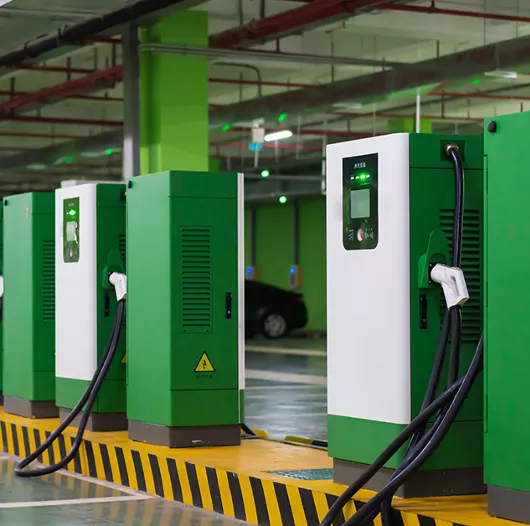Pondering the Power Plan for Massive EV Adoption


There are currently 47,142opens in a new tab publicly-accessible electric vehicle (EV) charging stations across the U.S., according to the Department of Energy. The Biden administration has said its goal is to raise that number to 500,000 chargers. Those chargers, however, will be useful only if electricity is available where and when it’s needed.
Make no mistake, the world is turning to EV in droves. Seeking Alpha reportsopens in a new tab that global EV sales in February 2022 were up 99% YoY, reaching 9.3% share. Sales of EVs in China were up 176% YoY to 20% share for the same period, while European sales were up 38% YoY to 20%.
Now imagine what could happen when millions of EVs arrive home from work each day and plug into their home electrical outlet at 6:00PM, to charge overnight. Bear in mind, there’ll be cooking going on, using electricity, maybe laundry, watching entertainment, doing homework. Everything we do involves electricity. The sudden daily surges will require management. In fact, perhaps the lower electricity rates that we all enjoy overnight may have to be increased.
Think of the draw on electricity by commercial transportation which will also be charging their EV fleets overnight. There is also a movement for more renewable energy which is depended on uncontrollable factors like wind and sunshine. Managing all this takes careful planning based on data and AI systems to manage them.
Hitachi Vantara is helping to figure that right out now with Optimise Primeopens in a new tab, a cross-industry consortium which was formed to respond to a government challenge in the UK to build systems for commercial EVs. This consortium is working on ways to save money for electricity customers and reduce environmental impact in the years to come. That means data and analysis on vehicle usage, recharging, energy optimization, demand forecasting, demand response and on and on. Even how to adapt the program itself to societal changes during the pandemic.
With our unmatched digital and industrial capabilities, Hitachi guides Optimise Prime through what they need now and what they’ll need next. The project meets a range of business challenges faced by our consortium partners, and wider societal challenges such as air quality, climate change and ensuring secure energy supply.
Two years into Optimise Prime – a trial involving up to 4,000 commercial vehicles and partners including Uber and Royal Mail – hopes are high that insights gleaned can create a ‘replicable gold standard’ for the global EV rollout and drive innovation to manage a reshaped load curve.
Hitachi Vantara’s Vice President and Head of Customers and Industries, Martin Kochman, told Utility Week Innovateopens in a new tab recently that while, in his eyes, EV technology has reached such a level of “maturity” that he believes it is ready for day-to-day and long-distance commercial use, he explains that effective solutions still need to be developed to cut the cost of owning and running it – such as the ability to charge EVs outside the electricity network’s peak times. Conclusions thus far, suggest that “centrally coordinated” and “intelligent” innovation to steer EV-charging behavior could create value in a number of ways.
However, the availability of a charging station is only one part of the equation. There must be an increase in electricity to power those charging stations. I am also concerned about the impact of increased electrical usage on the carbon footprint. Energy is required to generate electricity and most of that energy, 65%, comes from fossil fuels. A massive increase in EV usage today will mean an increase in the use of fossil fuels. It also requires an increase in the storage of electricity and a massive upgrade to the grid which distributes the electricity to where and when it is needed. The data from the Optimise Prime study will help to guide this planning.

Hu Yoshida spent 24 years at Hitachi Vantara helping define technical direction and enabling customers to address their digital transformation needs. He is widely known in the industry and was instrumental in evangelizing Hitachi's unique approach to storage virtualization.